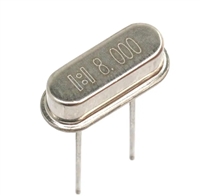EM9304
Packaging options are described in Section 4. Several types are offered for various application
constraints. A wafer chip-scale package (WLCSP25) is offered for minimum PCB footprint 2.340mm x
2.206mm; a QFN-28 package compatible with standard PCB technology is offered with additional GPIOs;
and bare die in wafer format is offered for i.e. chip-on-board (COB) applications.
The package pins are described in Section 1.6. The GPIO configuration is described in Section 1.7. The
reference schematics are described in Section 1.8 with required and optional external components.
1.2 Chip Architecture
The chip architecture is shown in Figure 3. In Figure 3a, the hardware architecture is shown. A 32-bit
MCU efficiently controls the movement of data between the RF modem, memory, and the digital
interfaces. The 32-bit MCU includes a floating point unit (FPU) for efficient implementation of sensor
algorithms, for example. A CRC coprocessor is also included for efficient verification of program memory,
for example. Memories are included for the following functions (size shown in parentheses):
•
•
•
•
•
•
ROM (136kB) – used for the start-up sequence, Bluetooth low energy link layer, and stack
iRAM (48kB) – used for application development
dRAMs (4, 4, and 12kB) – used for data with optional state retention
dRAM (8kB) – used for data without state retention
iRAM (4kB) – used for the subroutine jump table
OTP (128k) – used for configuration data, Bluetooth profiles, and applications
The memory architecture is divided into several different power domains for power consumption
optimizations. When a memory is not being used, it can be switched off to reduce current consumption.
During Bluetooth connected sleep mode the entire MCU subsystem can be shut off and only the power
management system and required state retention memories (if any) need to be powered. The power
management system will properly wakeup the MCU subsystem when it is needed. The RF modem is
also on a separate supply domain and is turned on and off as needed in order to minimize energy
consumption.
Digital interfaces including UART, SPI slave, SPI master, and I2C master are mapped to GPIO as required
by the application. When the chip is used as a peripheral to a host application, then the SPI slave and
UART can be used for communication. The standard Host-Controller Interface (HCI) is implemented for
communicating with the link layer, and a proprietary Application-Controller Interface (ACI) is implemented
for communicating with the stack and profiles. When the chip is used as an application host, then the SPI
master or I2C master can be used to talk with most standard digital peripherals. Other peripherals include
an interrupt manager and three timers for low power implementations, and an AES-128 encryption engine
for security implementation. A NIST compliant true random number generator is also included for key
generation.
The software architecture is shown in Figure 3b. The firmware is implemented in a power efficient manner
using a basic scheduler and memory manager. The EM9304 implements a Bluetooth 5.0 compliant link
layer at the bottom of the stack and accessed through the standard HCI interface. Peripherals are
accessed through hardware drivers. Bluetooth HCI commands are implemented and additionally some
vendor specific commands are implemented. The link layer is designed to optimize power consumption
in each role. The CPU is normally halted and is only activated when a task needs to be accomplished.
When sleeping, states and connection information are properly stored in the retention memory and all
other memories and peripherals are turned off. A low power timer is used to properly wakeup the system.
The EM9304 is certified by the Bluetooth SIG as Bluetooth Low Energy 5.0 Controller Subsystem (QD ID
93999).
The Bluetooth 4.2 low energy stack (QD ID 84268) is accessed through a proprietary Application
Controller Interface (ACI) in ACI mode or Application Programming Interface (API) in application mode.
The stack includes the L2CAP, Security Manager, ATT, GAP, and GATT. Standard Bluetooth profiles
such as Proximity and Find-Me are also included in this ROM, as well as proprietary data-exchange and
Firmware-Over-the-Air updating procedures to help manage data and program transfer.
The EM9304 can be customized using the one-time programmable (OTP) memory. Specific Bluetooth
profiles can be loaded depending on the application. Simple applications can be implemented including
parameters and unique identification numbers
sensor interfaces. Package configuration, production trim
can also be stored here.
7
www.emmicroelectronic.com
Copyright 2017, EM Microelectronic-Marin SA
9304-DS, Version 4.1, 30-Oct-17






 资料手册解读:UC3842参数和管脚说明
资料手册解读:UC3842参数和管脚说明

 一文带你了解无源晶振的负载电容为何要加两颗谐振电容CL1和CL2
一文带你了解无源晶振的负载电容为何要加两颗谐振电容CL1和CL2

 玻璃管保险丝与陶瓷管保险丝:区别与替代性探讨
玻璃管保险丝与陶瓷管保险丝:区别与替代性探讨

 PCF8574资料解读:主要参数分析、引脚说明
PCF8574资料解读:主要参数分析、引脚说明
